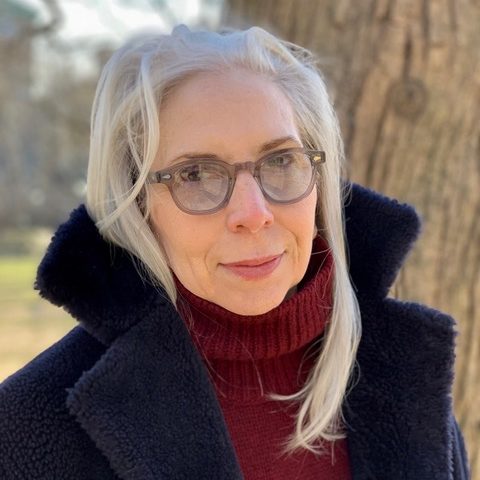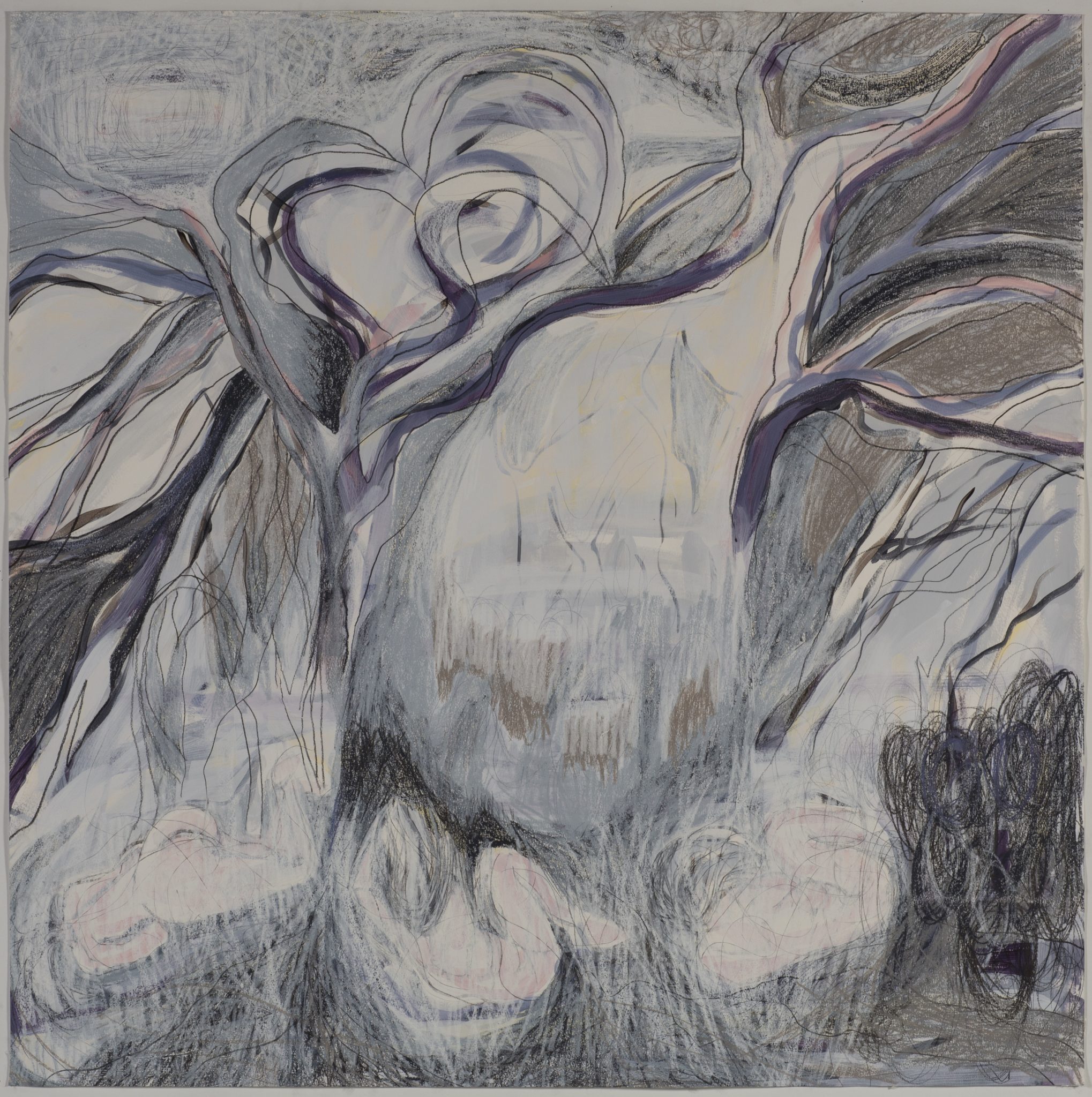
Eileen O’Kane Kornreich is a visual artist based in New York City. In 1978, Eileen helped to re-establish Ashawagh Hall in East Hampton as a DIY gallery for artists’ solo shows. She moved on to Manhattan and Brooklyn setting up artists’ studios as short-term galleries until the late 1980s. When family responsibilities forced her to alter her art making practice in the 1990s, Eileen turned her focus to helping with funding artist-run non-profit organizations.
The last few years, she has been instrumental in securing funding for Joe’s Pub Working Group residencies Joe’s Pub at The Public Theater as well as establishing their first benefit for the new year-long Vanguard Residency. The first Vanguard artist, Nona Hendryx, developed a multidisciplinary theater piece, Refrigerator Dreams, based on Carrie Mae Weems’s Kitchen Table Series, in which Weems performed in the premiere at Joe’s Pub in 2018.
Eileen has had an intimate multi-decade relationship with The Watermill Center. Her late husband, Bill Kornreich, was the Treasurer of the Board of Directors and a member of the Executive Board for over fifteen years. As a team, they contributed their time and talents for Robert Wilson’s prescient vision of the interdisciplinary laboratory for artists. In recent years she has been a supporter of the Summer Lecture Series.
Eileen’s involvement in other art organizations past and present includes: Ximena Garnica and Shige Moriya’s LEIMAY and CAVE studio and Women Artist: Reshaping the Conversation, a series of panel discussions at LongHouse Reserve.
photo © Kerri Fersel

Mortality Path
My art speaks of humans and nature — trees in particular — and how their mortality relates to and changes the environment they share. Using a structure of multi-perspectives made from observation and photo-collage, I render the drawings in a unified, two-dimensional view. Working within a vocabulary of line, layered color, and color erased, the work’s layered multi-mediums express movement from line, mass, and form in color or color white-out, thus creating a dream-like feel. My photo-collage references a historic Manhattan park that has served many roles, most significantly to these drawings as a potter’s field. The body of work’s narrative is less didactic than the manner in which some contemporary art would present a similar story. Instead, I build from society’s constructed beauty that masks historic atrocities below. In some works, the human form is absent while in others the human form is below grade, as compost or in another state of decay, moving upwards to the turf, changing the topography just as from above the shedding or felled trees do.
During my residency I will use observation and construct photo-collages of Watermill’s trees and surrounding property and conduct research on the property’s history. My research will require access to Watermill’s library and any written and photographic documentation of landscaping of trees during all years and stages of the Center’s construction, including present plantings.
Watermill’s trees are very important cast members in the daily life and in the visual and performative art developed at the Center. Robert Wilson’s sensitivity to the Shinnecock’s ancestral land and the care he employs in tree choice, placement, and grooming allows the trees to be ready-made collaborators with my art making.
In 2019, I mark my 26th year of personal involvement with The Watermill Center. I have walked the property at all stages of Bob’s ongoing realization of the Center; when the buildings were still decrepit, when there were no paths, when the trees were vine-choked, and when the earth was marl and sand. I have witnessed earth moved and removed, vegetation planted and replanted with Bob’s orchestrated precision. I have seen the trees cared for as they have never been before. All of the history I share with the Center and its environment will speak easily through my mark making.
There is a hallowed ground feel to the Center’s property that I intend to explore in the context of our mortality and how that shapes our environment.
